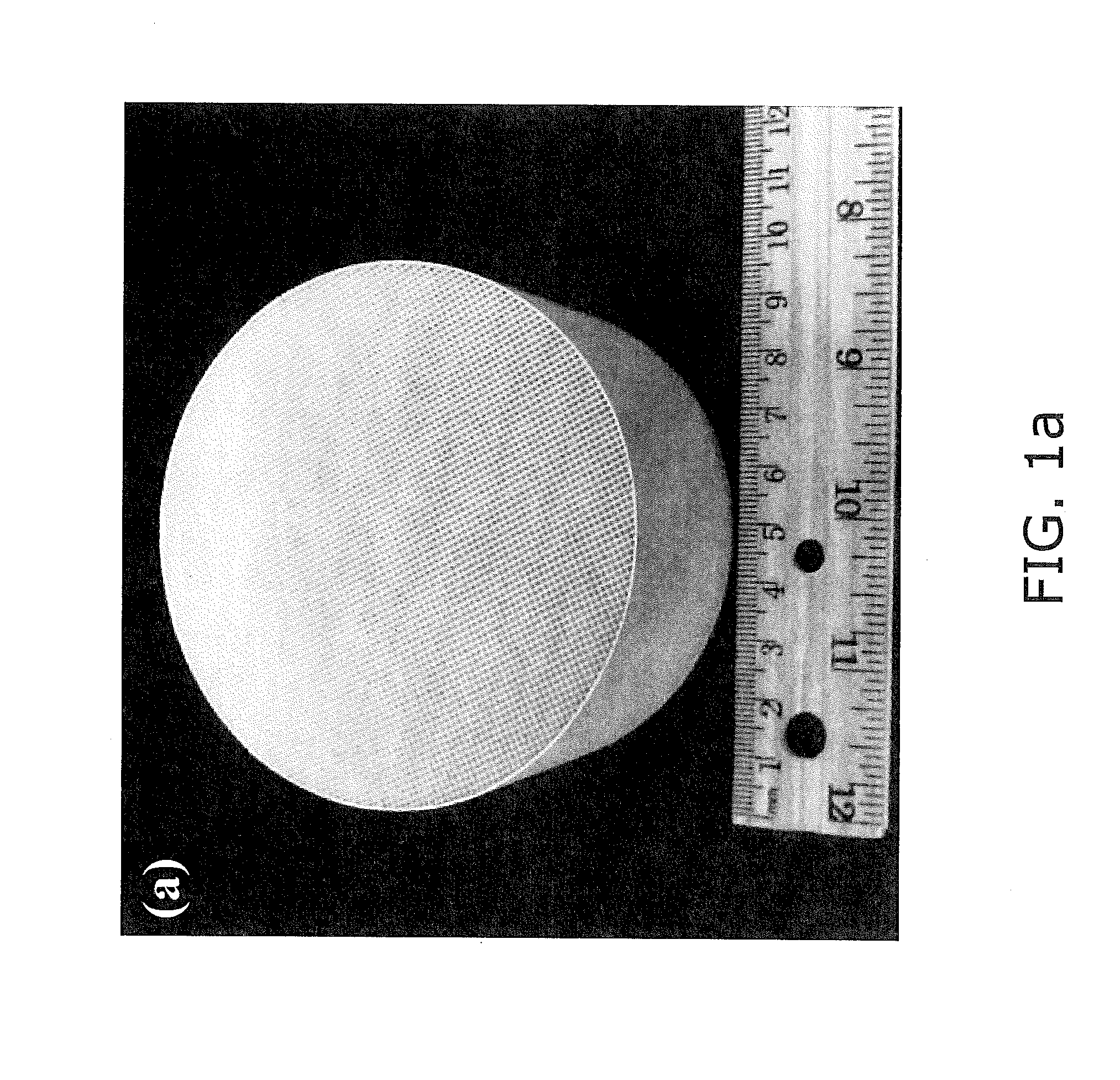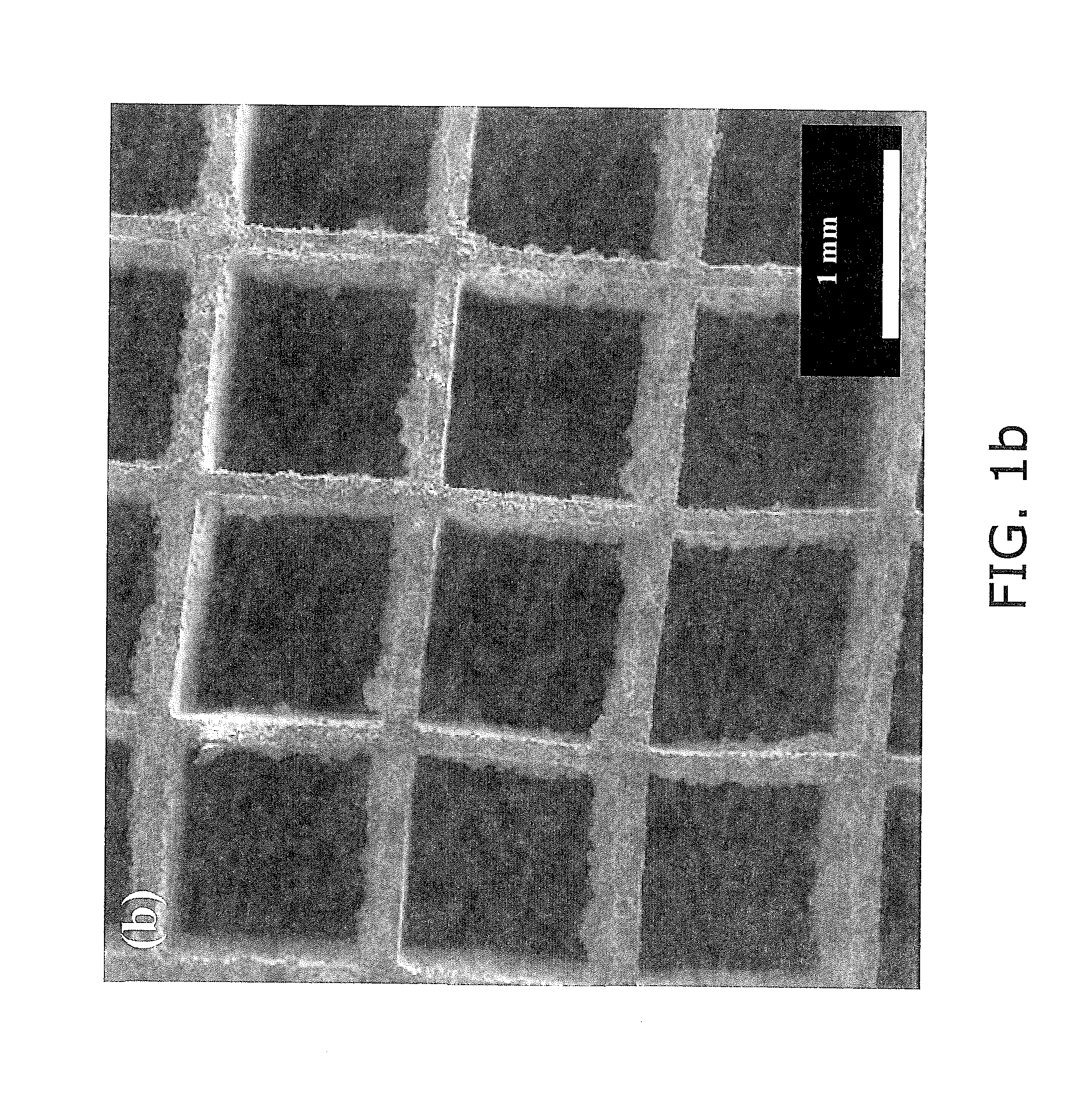Metal oxide nanorod arrays on monolithic substrates
a metal oxide nanorod and monolithic substrate technology, applied in physical/chemical process catalysts, organic compound/hydride/coordination complex catalysts, separation processes, etc., can solve the problems of intrinsically non-adherent particle-based washcoats that can be easily subjected to erosion, and low surface area, etc., to achieve high surface area, high thermal stability, and sulfur poisoning
- Summary
- Abstract
- Description
- Claims
- Application Information
AI Technical Summary
Benefits of technology
Problems solved by technology
Method used
Image
Examples
process example
3-Step Process Example
ZnO / LSCO / BaO Composite Nanowire Arrays on Cordierite or Other Substrates
[0082]Dip-coating of ZnAc2+350° C. annealing, 5-10 cycles; sonication helps uniformity.
[0083]The monolith substrate was first rinsed by deionized water and ethanol in ultrasonic bath and then coated (via dip-and-dry) with 1-100 mM, such as about 10 mM, zinc acetate (ZnAc2) in ethanol solution. After the sample was dipped into the zinc acetate ethanol solution, the solution with the sample was then put into an ultrasonic bath for 0.5-10 minutes, such as about 5 minutes. The substrate was then heated and dried on hotplate at 120-200° C. for 1-10 minutes. The previous steps were repeated for 3-10 times to ensure enough seed nanoparticles stick onto the substrate surface. The dip-coated substrate was then annealed at 300-400° C., such as about 350° C., for 1-10 hours, such as about 2 hours.
[0084]Then, after the film position, the ZnO seed layer coated substrate was put into a covered glass bott...
PUM
| Property | Measurement | Unit |
|---|---|---|
| temperature | aaaaa | aaaaa |
| temperature | aaaaa | aaaaa |
| temperature | aaaaa | aaaaa |
Abstract
Description
Claims
Application Information
 Login to View More
Login to View More - R&D
- Intellectual Property
- Life Sciences
- Materials
- Tech Scout
- Unparalleled Data Quality
- Higher Quality Content
- 60% Fewer Hallucinations
Browse by: Latest US Patents, China's latest patents, Technical Efficacy Thesaurus, Application Domain, Technology Topic, Popular Technical Reports.
© 2025 PatSnap. All rights reserved.Legal|Privacy policy|Modern Slavery Act Transparency Statement|Sitemap|About US| Contact US: help@patsnap.com



